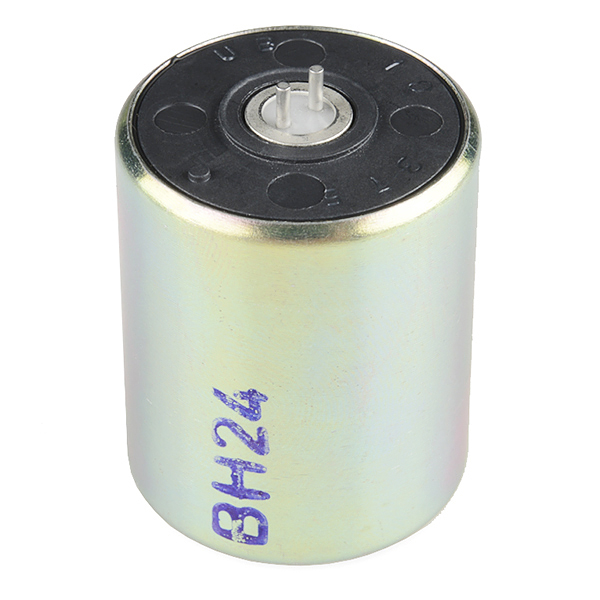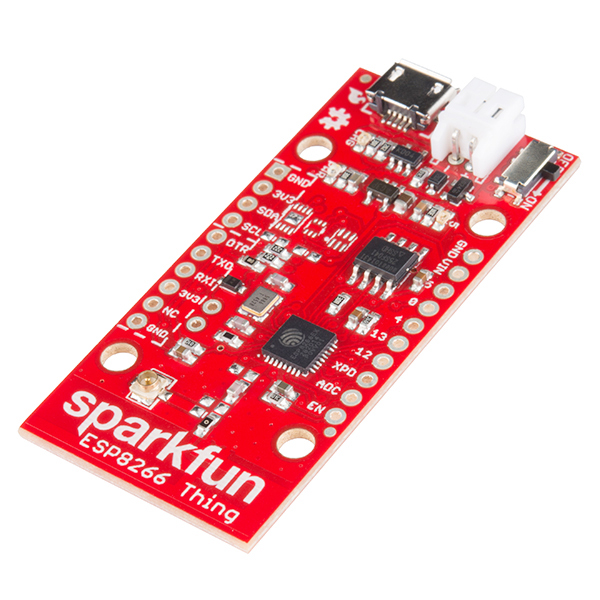Flashback to 2012. As Tech Researcher here at SparkFun, I was freaking out a little. My job is to bring in the newest technology and products and there was a major lack thereof. Most things we were finding were geared toward the tablet and mobile phone market. The biggest thing at that moment was the announcement of the Raspberry Pi on the horizon. But the idea of a $35 Linux machine was very suspect in our eyes at the time (boy we were wrong).
Arduino was going strong and gaining steam, but there were very little valuable additions that could be made from a hardware standpoint. The growth of the Arduino ecosystem at the time was mainly in software. It was something that was coming up at a lot of our creative meetings (and still does today) – the question of, "Could this be done in software rather than a new product?"
I'm one to fight against this logic; case in point, our Geophone almost didn't make it onto the catalog. There was a strong contingent of engineers who felt it was something that just as easily could have been done in software with an accelerometer. While true, I felt asking our customers to do that to get seismic data was a stretch.
Would manipulating accelerometer data in software be worth the price difference?
So before we continue (lots of build up here, I know), it probably sounds like we were running short on new products. That wasn't the case. The point I'm trying to get across with the first two paragraphs is that we're at the mercy of the greater electronics markets. The prices we get our parts and components for greatly relates to the larger market it serves. If something is used in mobile electronics or automotive applications, it's going to be dirt cheap. If not, the price is going to be noticeably higher due the smaller quantities the market uses.
A good example of this is the price difference between carbon monoxide and dioxide sensors. The carbon monoxide sensor is widely used, especially in automotive applications, and so they're readily available for under $10. On the other end, carbon dioxide sensors aren't as widely used, so for accurate CO2 sensors you can expect pay upward of $100. There are other factors at work here, but it's the best example I can come up with on half a cup of coffee.
If there wasn't going to be growth in terms of new products in the larger market, then we needed to start thinking about taking chances on products outside these markets. What this means is taking bigger chances on products that have a very unclear prospect in terms of sales. We would have to create products that were valuable to our customers at a price that works for them. This includes ordering in larger volumes and putting a lot of work into a product that, in the end, might not be as valuable to the customer as we thought. It's a risk most companies have to take, but at the same time it's frustrating to learn that time and energy could have been spent on something that our customers find more useful.
Around this time, we started hearing murmurs of the Internet of Things. It was an absolute silly term at the time and we didn't take much stock in it. While we agreed with the idea it conveyed, we simply thought that was the next step in electronics and the term wouldn't be heavily used. .NET Gadgeteer was one of the development environments using the term a lot, as were other companies in the maker community.
Then single board computers took off. We started figuring out how we were going to support these things. SBCs were way more powerful than the development boards we had been building and supporting, so we had to think in a whole different manner. Suddenly we were building boards capable of doing things we weren't ever expecting to get into. We had gotten into crypto-authentication and we were looking for displays with an HDMI interface. While while didn't realize it back then, this was all building up to the tie-in that was going to bring everything together, the Internet of Things.
Almost out of nowhere, we started getting contacted by companies we never would have imagined knew we existed let alone wanted to work with us. Manufacturer representatives and sales people were coming to us with new products aimed at IoT. This silly term we laughed off was taking off.
There was a new direction that the big electronics manufacturers were going in. They were no longer creating sensor variations focused on working better in mobile phones, or hardened to work better in an industrial environment, they were expanding into sensors that wouldn't even make sense in a mobile phone. Sensors like CO2 sensors are gaining momentum behind trends like air quality monitoring and indoor gardening. This gives us new directions to take our products in too. A functional middle ground is forming in microcontrollers, somewhere between the processors used in tablets and mobile phones and the 8- and 32-bit microcontrollers that Arduino was built upon. A new, big market was building within electronics that better aligned with the projects our customers create.
More inexpensive wireless is expected to come. But beware – it comes with the necessity for more advanced features, like security.
So to sum things up, we're excited about what IoT brings to us as hobbyists and DIYers. There are more and more awesome components and parts we get to hear about everyday that we can't wait to bring to you guys (and use ourselves). Even if IoT isn't your electronics cup-of-tea, it stands to benefit you. Expect exciting new products from SparkFun (and the electronics community in general) in the coming year!








BTW, I have been waiting for over a year for you to start carrying a CO2 sensor... I know I could get one somewhere else, but I would rather get it through Sparkfun. :-)
I'm still getting used to the "Internet of Things" designation for random stuff being connected to the internet. I hate the name, but can't think of anything better.
We're working on the CO2 sensor. It's been quite the journey so far and continues to be. There's so many variations that require different levels of work for the user, most notably establishing a baseline reading. But there are also sensors out that measure environmental voltaics which supposedly can get you the information you're looking for with a CO2 sensor, but at a lower price.
Anyway, hoping to have one locked down in the first half of 2016. We're hearing a lot from companies about these and we're hoping we'll be able to stock one or more.
Cool! I am going to try to implement the CO2 sensor into some sealed plant and algae growth chambers to measure CO2 usage vs. plant growth. Thanks for doing the background research for us!
I was forced to go to the Adafruit website because Sparkfun didn't have as much product selection (for LED projects, in this case, which are getting more popular).
"I felt asking our customers to do that to get seismic data was a stretch." Can an accelerometer really replace a geophone? Geophones are used to sense earth vibrations, when buried in ground. Would a accelerometer really could do the same thing? I couldn't find an answer yet. I've even looked over PhD papers comparing these 2 technologies, but no relevant response
I was under a similar impression. We had found some evidence that it might be possible (probably those same papers you saw), but nothing concrete. My main argument was that I was not comfortable arguing that the data collected would be of the same quality as a Geophone with no cost effective way of proving the data to be accurate.
Two important considerations that will (or ought to) hinder the IoT bandwagon: longevity and security.
Longevity: if the leaf sensor's operation depends on an external "cloud" services, then that service must be around for the lifetime of the leaf sensor. Remember Microsoft's "PlaysForSure"? MS has turned of the servers, so when your computer breaks or is replaced, you have lost your investment. (When the leaf sensor breaks it will be replaced so that isn't the problem.)
Security: leaf sensors' code will need to be upgraded when, not if, their security is breached. How many Smart TVs are implicated in security breaches or DDoS attacks?